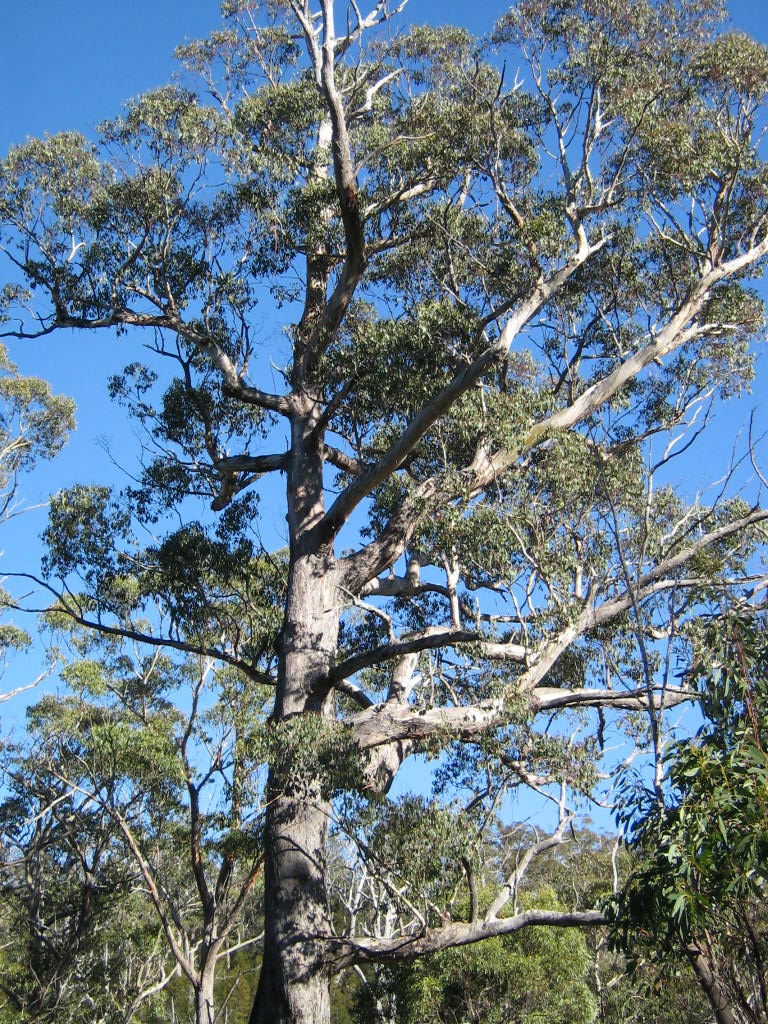Scientific Name: Eucalyptus tasmaniensis Endemic Having a natural distribution confined to a particular geographic region
Common Name: gumtopped stringybark
Family Classification (Clade): Eudicots
Family: Myrtaceae
Form Description: Tree, often one or two of the branches stout and spreading then bent upwards. Leaves: Juvenile – asymmetrical, elliptical, blue-grey. Adult – asymmetrical, blue-green. Bark: Reddish-brown, fibrous at the base but smooth, cream/grey on the branches and upper trunk.
Height (m): 30 – 50
Flowers: Umbels with 7-15+ flowers.
Fruit: Woody capsules – top-shaped with a sunken disc and 4 valves.
Municipality
Plant Communities
Habitat Notes
A major dominant of tall eucalypt forest on the more fertile mountain and plateaux soils.
Site Tolerance
Exposed, Moist, Rocky, Windy
Soil Tolerance
Fertile, Loam, Nutrient-poor, Well-drained
Frost Tolerance
Hardy
General Notes
An ornamental tree with contrasting smooth/stringy bark and grey pendulous leaves. The size of the tree renders it suitable only for large properties. Bee attracting. An important source of timber, marketed as ‘Tasmanian Oak’. Also good for firewood.
Propagation Calendar
-
Flowering Month
Jan Feb Mar Apr May Jun Jul Aug Sep Oct Nov Dec -
Seed Collecting Month
Jan Feb Mar Apr May Jun Jul Aug Sep Oct Nov Dec -
Sowing Month
Jan Feb Mar Apr May Jun Jul Aug Sep Oct Nov Dec -
Cutting Month
Jan Feb Mar Apr May Jun Jul Aug Sep Oct Nov Dec
Propagation Method
Seed Information
Seed Collection
Collect capsules and store in paper bags until valves open to release seed. Separate seed by sieving.
Seed Treatment Method
Cold Some species require exposure to cold before they germinate. These species are best sown in early winter and left to germinate in a shade house.
Seed Storage Life
More than 10 years dry stored in refrigerator at 3-5°C
Seed Treatment Notes
Suitable for direct seeding. Otherwise stratification at 3-5°C for 6-10 weeks. Although not as successful as stratification, treatment of seed with gibberallic acid or a 15 per cent solution of potassium nitrate for 48 hours can overcome the need for cold storage.
Germination Time
2-4 weeks
Cutting & Division Information
Impracticable
